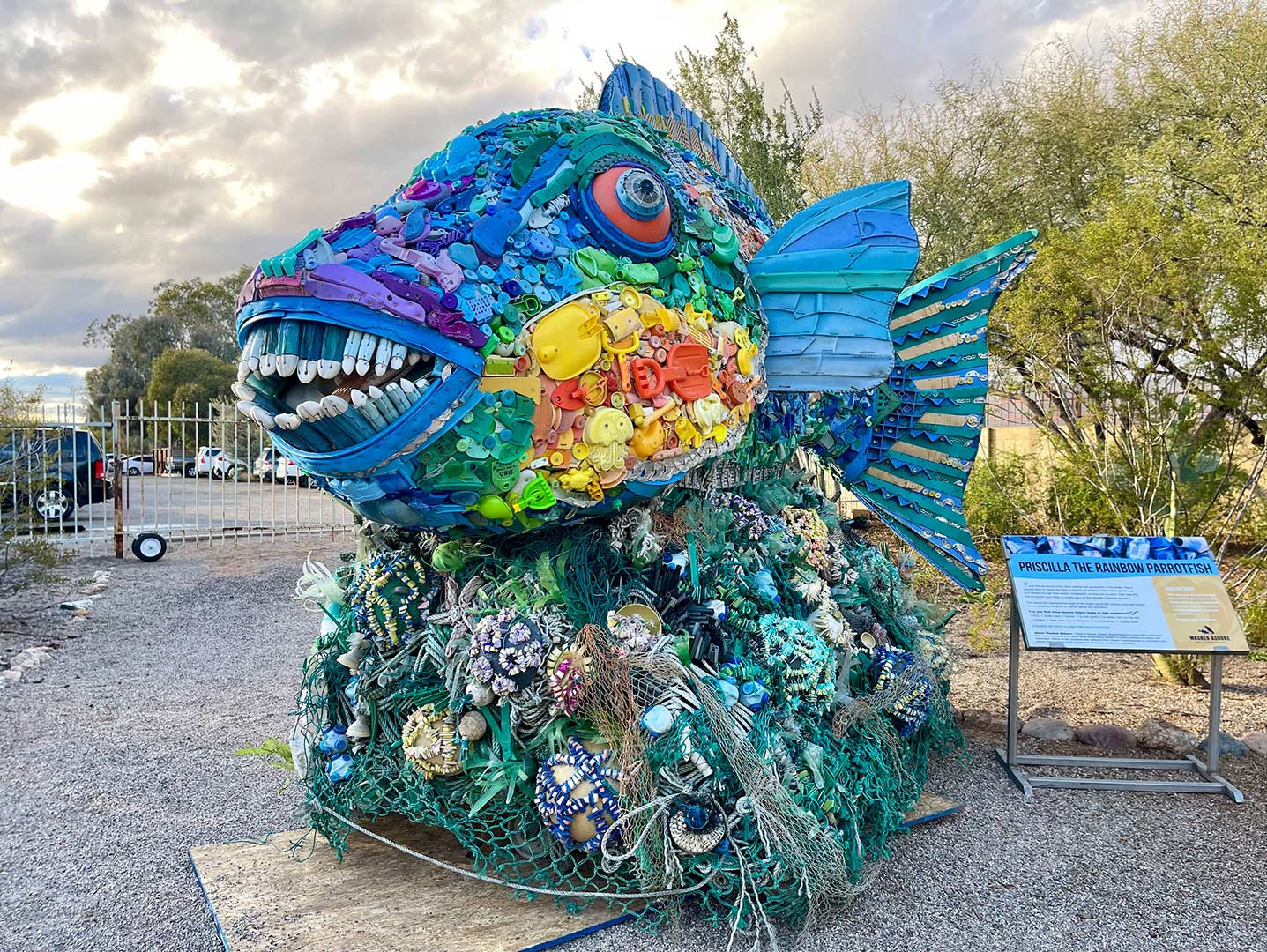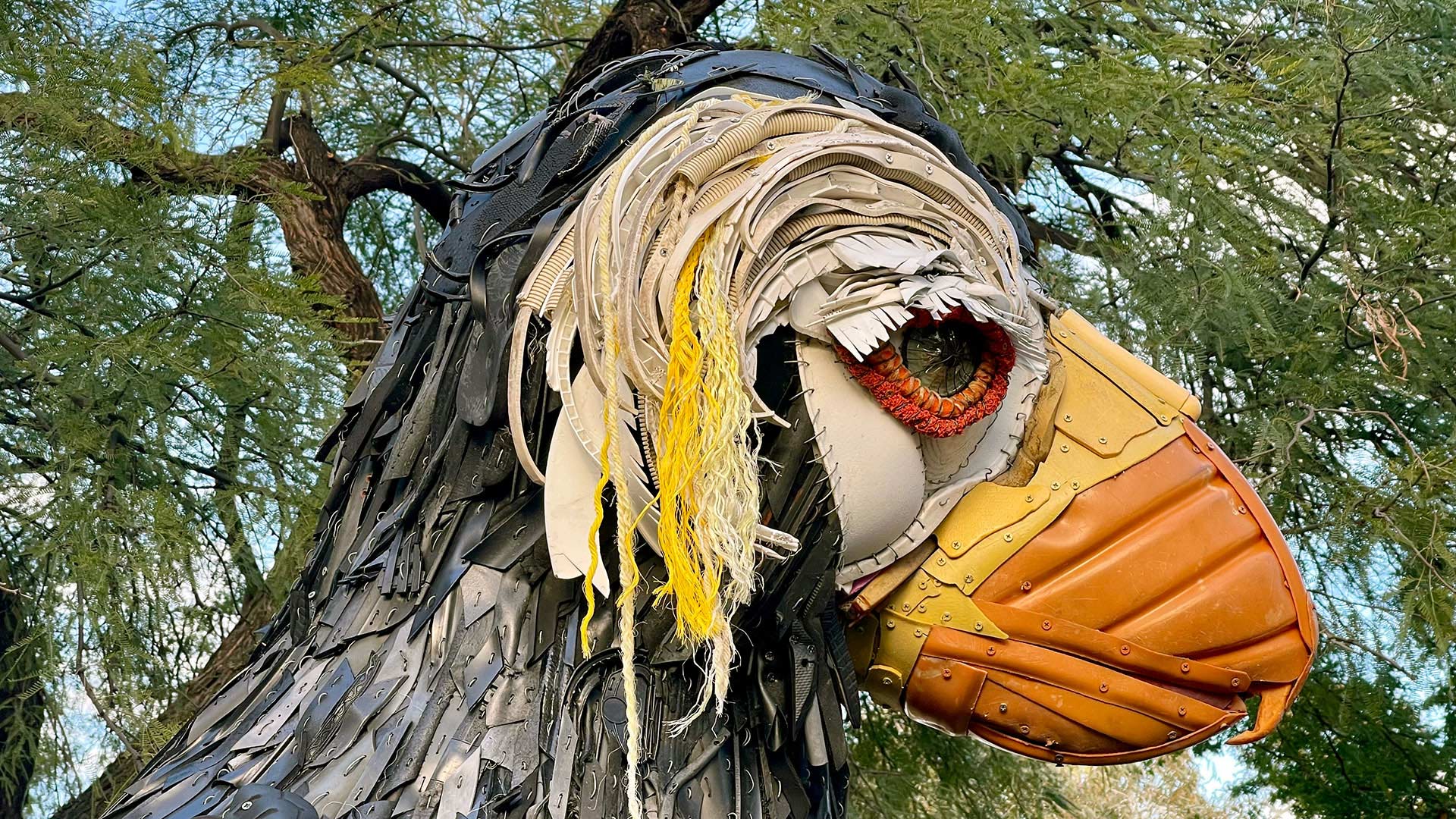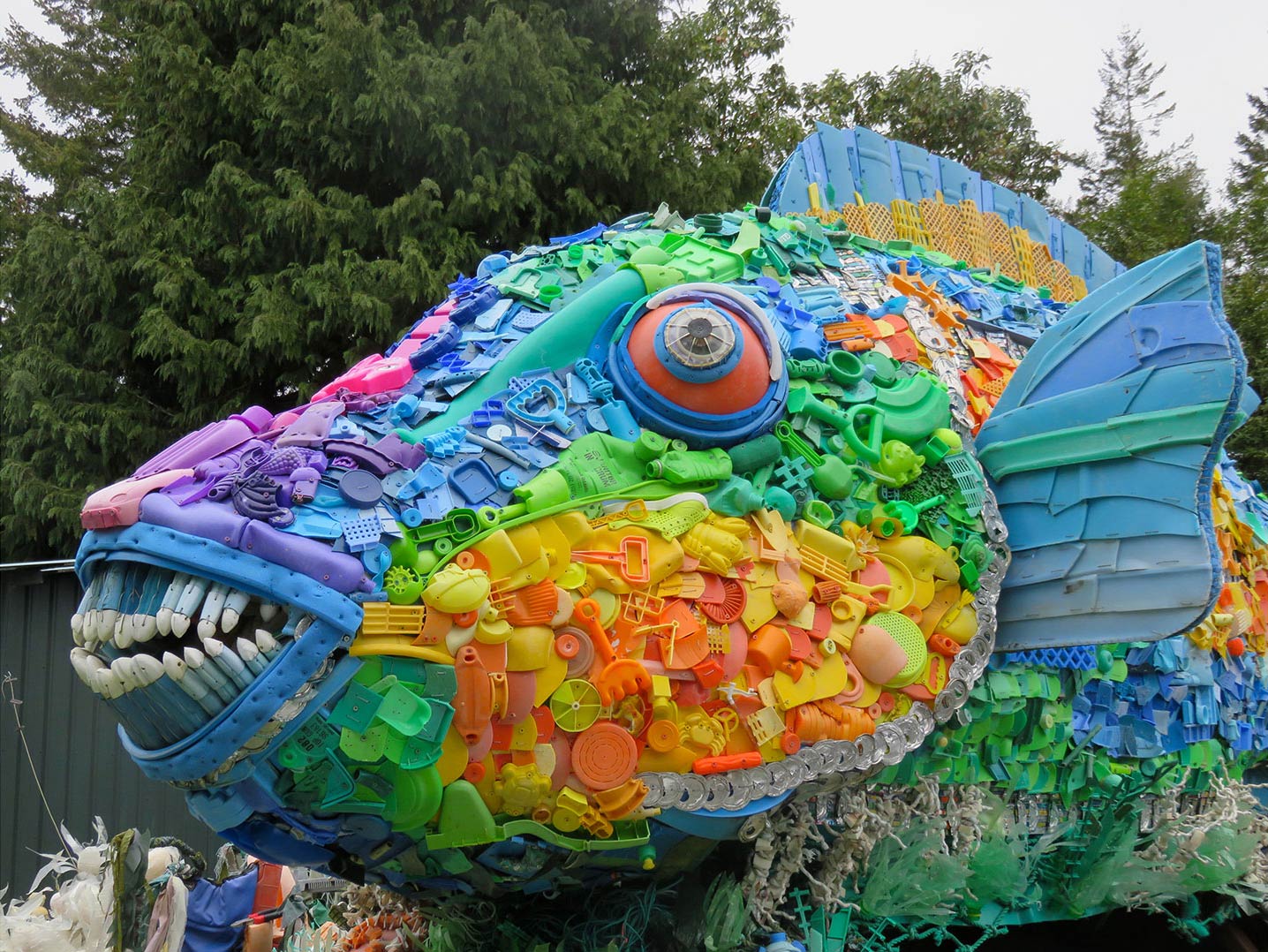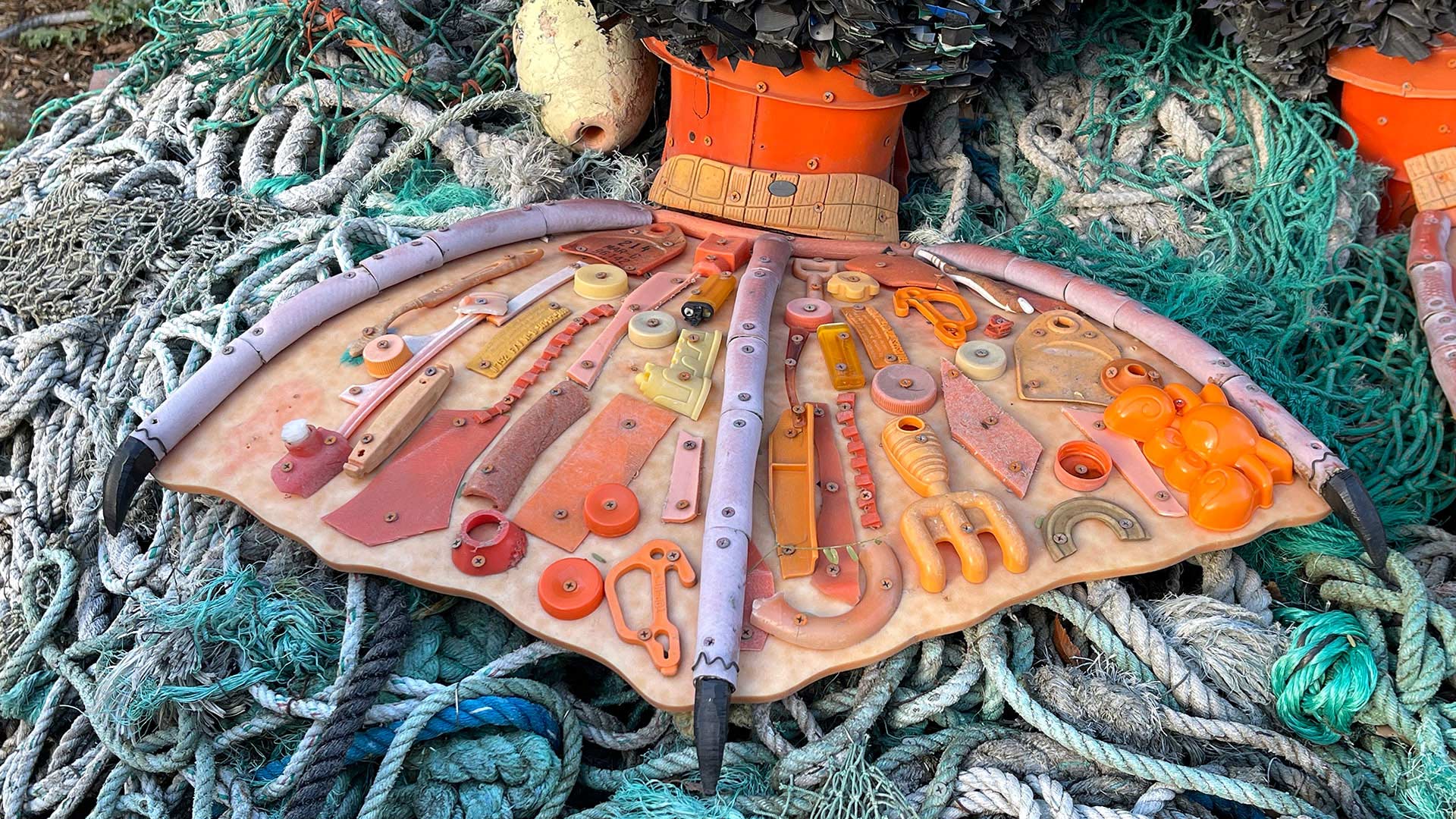 VIEW LARGER Priscilla the Parrotfish on display at the Tucson Botanical Gardens on Thursday, Jan. 28, 2024. She is one of seven ocean plastic sculptures brought to Tucson by the non-profit Washed Ashore
VIEW LARGER Priscilla the Parrotfish on display at the Tucson Botanical Gardens on Thursday, Jan. 28, 2024. She is one of seven ocean plastic sculptures brought to Tucson by the non-profit Washed Ashore Tucson Botanical Garden’s newest visitor is a massive rainbow parrotfish named Priscilla.
Priscilla joins a rockhopper penguin, a tufted puffin, dozens of jellyfish, a whale’s tail, a mako shark, and more. But surprisingly, these creatures don’t need water.
Washed Ashore: Art to Save the Sea is a nonprofit that turns plastic debris from the ocean into meaningful sculptures that aim to bring attention to the very thing they’re made of.
Brad Parks, Conservation Education Director, said his organization’s efforts are “a beautiful solution to an ugly problem.”
 VIEW LARGER Sebastian James is a tufted puffin sculpted entirely from plastic washed up on the Oregon coast.
VIEW LARGER Sebastian James is a tufted puffin sculpted entirely from plastic washed up on the Oregon coast. Volunteers have collected, cleaned, and transformed over 60,000 pounds of plastic from the Oregon coastline into nearly 100 sculptures.
A lot of plastic material comes to Washed Ashore in fragments, since plastic debris can spend years slowly breaking down at sea. But other trash stays intact, and Washed Ashore artists intentionally place those recognizable items at eye level.
Priscilla’s scales are a mosaic of bottle caps, shovels, beach toys, and foam flipflops. In others, lighters, spoons, and golf balls form the surface.
“It makes you painfully aware of how that plastic was used one time. And now it's out in the ocean,” said Katie Rogerson, an employee of the Tucson Botanical Gardens.
 VIEW LARGER A close-up view of the plastic items on Priscilla the Parrotfish.
VIEW LARGER A close-up view of the plastic items on Priscilla the Parrotfish. Some ocean plastic comes from industrial activities, like the fishing nets Priscilla rests on that imitate ocean waves. But the organization reports over 80 percent of ocean plastic washes into the sea from land, which means the plastic problem is not just affecting coastlines.
“We want them to sort of have a sense of realizing how much plastic we use in our own homes or at work. And then hopefully have an epiphany about how to change that behavior,” Rogerson said.
Recent reports estimate as many as 170 trillion plastic pieces exist in the oceans today. That unprecedented amount of waste is having drastic effects on ocean animals that mistake bits of plastic for food.
Parks says that art is a necessary way of confronting an overwhelming problem.
“Through an emotional experience, you can be inspired or horrified, or again, whatever emotion works, but really trigger a response that gets you to consider, to think and then make that behavior change. So art really is a great venue for this type of work,” Parks said.
Washed Ashore artists can cut up larger pieces to shape a creature’s feathers or beak, but they don’t paint any of the materials from their original state.
Certain colors can be a challenge, Parks said, like their latest project, an osprey.
“This osprey then has a lot of brown on it. That's a rare color. It's going to take us a while to actually make sure we have enough, and then creatively layer it with black,” he said.
 A close-up view of Washed Ashore’s sculpture of a tufted puffin. The organization places recognizable plastic items at eye level in hopes of the viewer reflecting on their own plastic consumption. The puffin’s feet feature items like lighters, children’s sand tools, and bottlecaps.
A close-up view of Washed Ashore’s sculpture of a tufted puffin. The organization places recognizable plastic items at eye level in hopes of the viewer reflecting on their own plastic consumption. The puffin’s feet feature items like lighters, children’s sand tools, and bottlecaps.
In conjunction with the Washed Ashore exhibit, the botanical gardens are promoting Ward 6’s local effort to combat single use plastics. Since 2022, Ward 6 has partnered with tech startup ByFusion to collect unrecyclable plastics and turn them into building materials called ByBlocks.
Ward 6 city councilman Steve Kozachik’s Jan. 22 newsletter said his constituents average 6 tons of plastic donations a week.
Rogerson said the botanical gardens is excited to promote the program.
“They have donated quite a few of their ByBlocks. And we're going to be using those ByBlocks to build some raised beds,” she said.
Parks said he was excited to learn about the program.
“Creative solutions are going to be needed to address a problem that's this big,” he said.
Visitors also have the chance to name one of Washed Ashore’s creations. The organization said they would collect name suggestions for the plastic jellyfish hanging from the garden Pavilion and eventually hold a vote for the winner.
The Washed Ashore exhibit will be at the Tucson Botanical Gardens until June 30th.

By submitting your comments, you hereby give AZPM the right to post your comments and potentially use them in any other form of media operated by this institution.